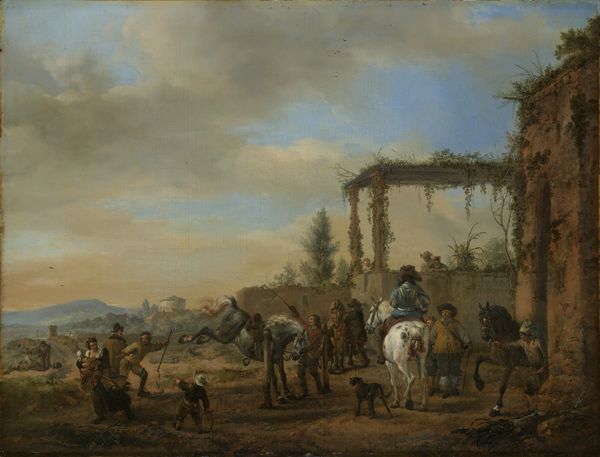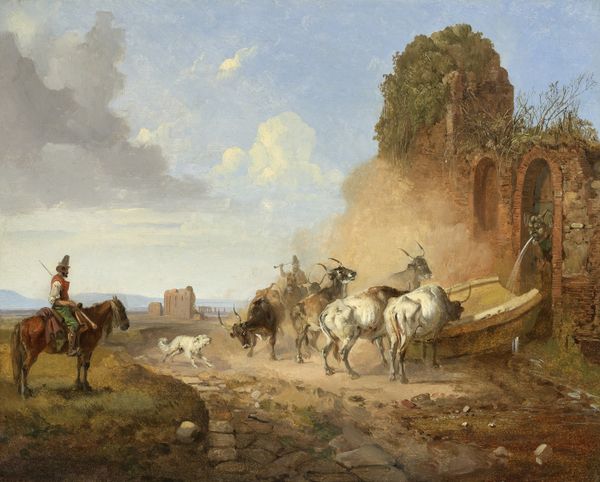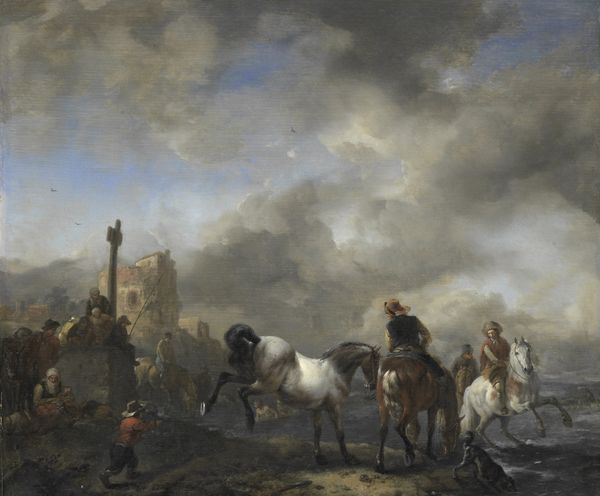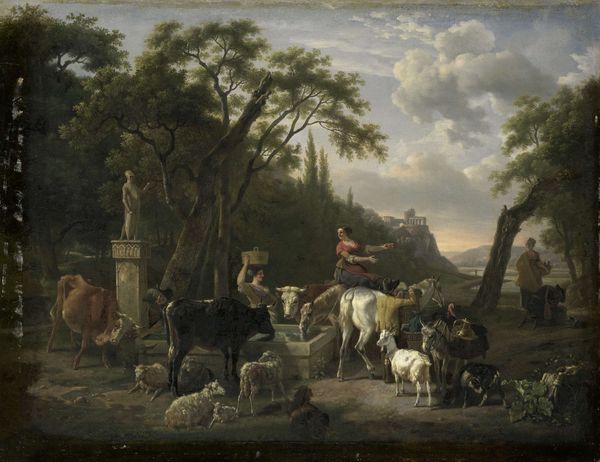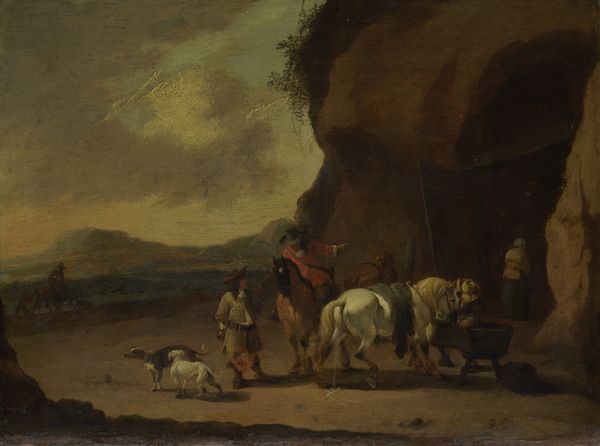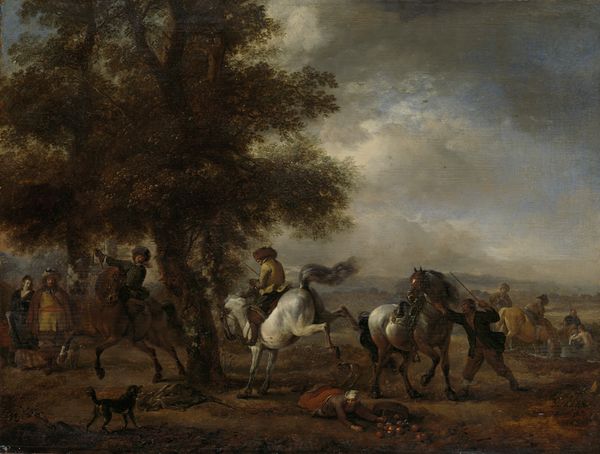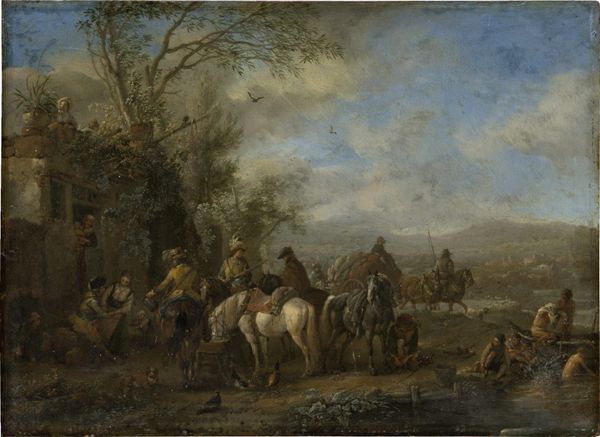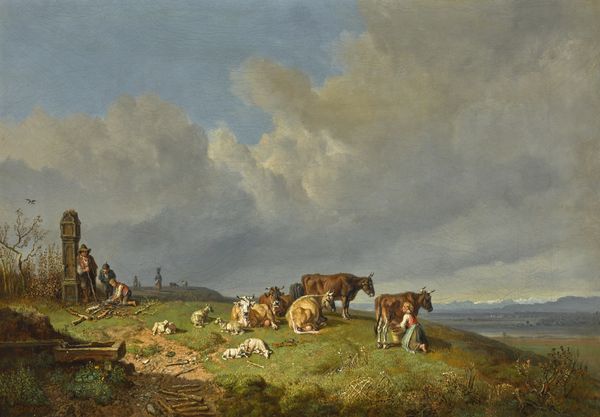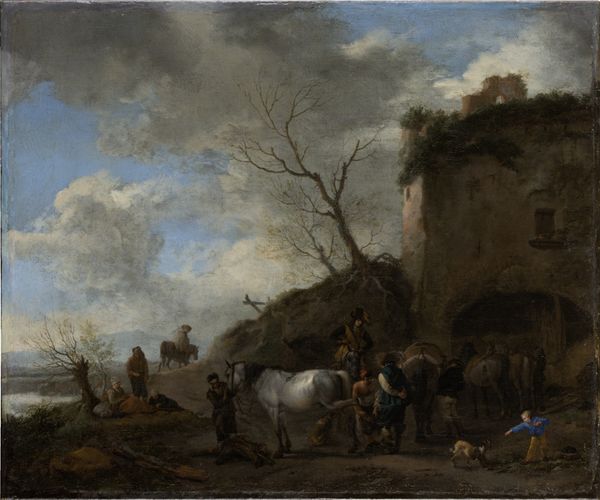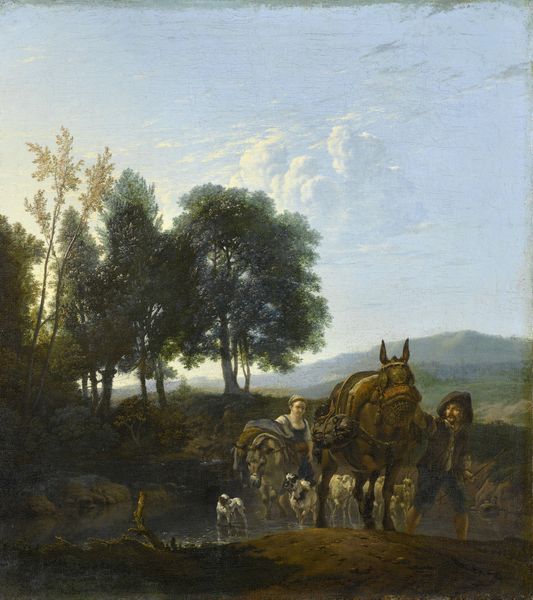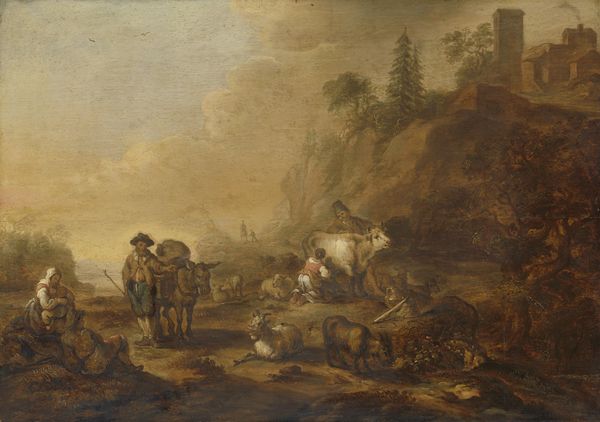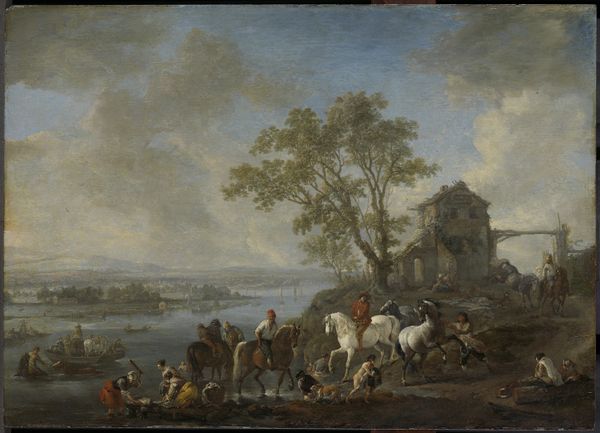
painting, oil-paint
#
baroque
#
animal
#
painting
#
oil-paint
#
landscape
#
genre-painting
#
realism
Dimensions: height 15 cm, width 18.5 cm, height 22 cm, width 25.1 cm, depth 2.5 cm
Copyright: Rijks Museum: Open Domain
Editor: So, this is "Livestock by a Fountain" by Willem Romeyn, created sometime between 1650 and 1694 using oil paint. It gives off this calm, almost sleepy vibe, doesn't it? What do you see in this piece? Curator: Indeed. This piece, though seemingly a simple genre scene, provides a fascinating lens through which to examine the intersection of class, labor, and the evolving relationship between humans and animals in the 17th century. Note how the livestock are not merely picturesque elements; they are workers, carriers of goods. Where do you think this everyday scene exists within a bigger economic framework? Editor: I hadn't really thought about it that way. It seems almost idyllic, but I guess these animals really were the engine of commerce at the time. It makes me wonder about the farmer, if it represents his labor, but why it’s ennobled. Curator: Precisely. It’s crucial to analyze how the depiction of rural life often obscures the realities of peasant labor. Consider also the fountain – a marker of civilization imposed on the natural landscape. Is this civilization helping those living there, or just making it easier to exploit them? How does Romeyn navigate these complexities? Editor: It’s strange to think of fountains in this setting! He kind of shows them just "existing", not really benefiting them, it looks as though the animals use the water. Almost like animals have as much of a right to it than people do in Romeyn's portrayal! Curator: And in this light, we have to challenge ourselves and reflect on what values the painting conveys by immortalizing that status. Where does class come into play, and how do you interpret that? Editor: This has totally changed how I see it. I had such a superficial read at first, focusing just on the "calm" aesthetic. It’s so important to dig into the historical context and what the paintings are actually trying to tell us about societal structures. Curator: Absolutely, it reminds us to constantly question the narratives presented in art, uncovering the hidden dialogues around power, identity, and social justice that are often embedded within seemingly simple scenes.
Comments
No comments
Be the first to comment and join the conversation on the ultimate creative platform.
